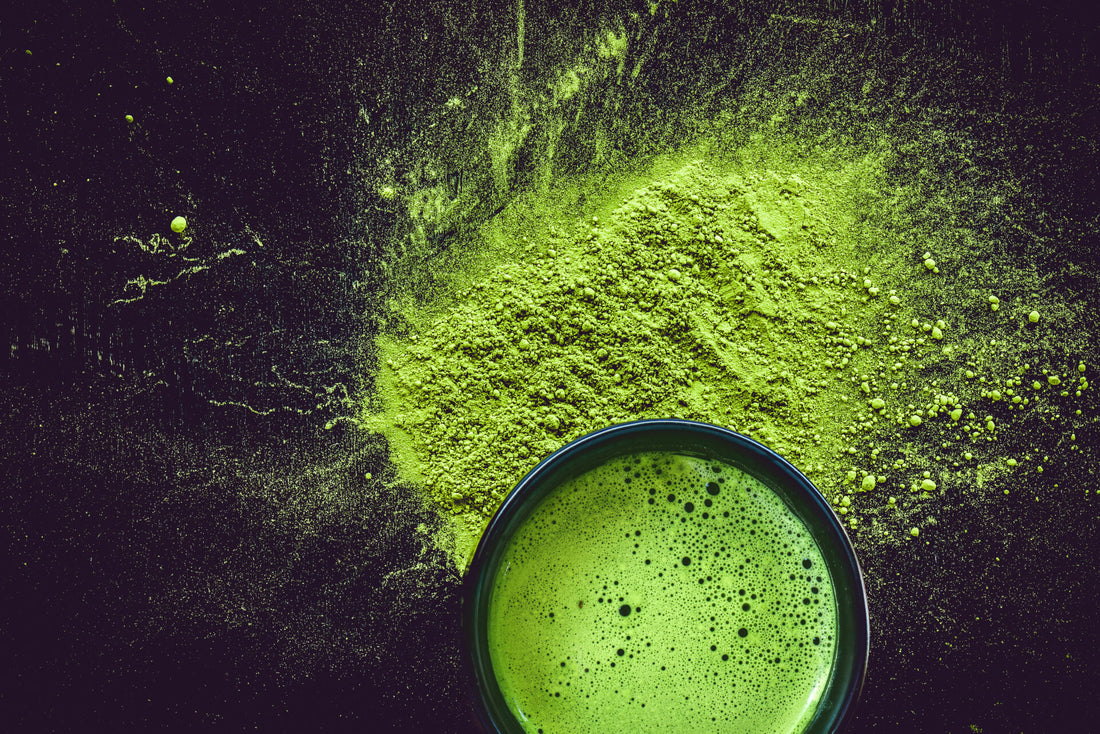
What Does Matcha Taste Like?
Matcha green tea comes from ground up leaves of the Camellia sinensis plant. All varieties of tea come from this plant. Yet, matcha has a distinct taste attributable to a few different factors, including the production process, the area where it is grown, and whether it is conventional or organic.
Why does matcha taste different from other green teas?
The texture and mouthfeel of matcha are unique. When consumed as a tea, it is frothier and creamier than regular green tea, which is clear and light. Matcha is made by finely grinding up the entire leaf into a powder, unlike other green teas, which are made from crushed tea leaves. Using the whole leaf also means that matcha has a much higher chlorophyll content than regular green tea, giving it its signature bright green color and a vegetal flavor.
In order to prepare matcha tea, hot water is added to the powder, and the mixture is whisked with a traditional bamboo brush. Regular green tea is steeped in hot water, and the leaves are then discarded before drinking. This difference in preparation creates a difference in the textures and flavors of each drink.
Another thing that sets matcha apart from other green teas is its umami flavor, which comes from the amino acid glutamate. While other green teas also have this amino acid, it is more pronounced in matcha. The savory and umami flavor in matcha is also more noticeable due to its high concentration of L-theanine.
Does all matcha taste the same?
It’s hard to pin down a single flavor profile for matcha because all matcha does not taste the same. The flavor and fragrance of matcha vary from region to region; even how you prepare your matcha tea can impact the end result and taste. If you feel like your matcha tastes different this time, you might be right! Below are some reasons why this may be the case.
Which region is your matcha from?
One thing that affects the taste of your matcha is where it was grown. Factors like humidity levels, the acidity of the soil, rainfall, and climate of the matcha’s place of origin all affect how it tastes and looks.
The highest quality of matcha is produced in Japan, particularly in the regions of Uji, Kagoshima, and Nishio in the Aichi prefecture. The different terroirs- including the environmental conditions and altitudes- in each of these places produce a unique flavor of matcha. Uji matcha is the most sought-after variety, and its tea leaves are considered to be of the highest grade. The tea plants are kept in the shade for up to six weeks, after which the youngest and greenest leaves are harvested. These leaves have the highest chlorophyll content. The leaves in Uji are dried at a very low temperature, allowing them to retain their vibrant green color and giving them a creamy mouthfeel and a grassy, floral taste with hints of umami.
Kagoshima is one of the primary producers of organic matcha. Matcha from this region is mostly grassy and has a milder taste with almost no bitterness or sweetness. Matcha from Shizuoka, another top-producing region, has a rich umami flavor with both sweet and bitter notes and vivid green color. Overall, matcha tends to be slightly vegetal or grassy, can range from sweet to slightly bitter, and have umami notes that add depth of flavor and richness. Many people describe it as having an earthy taste.
Is your matcha organic or conventional?
Organic and conventional matcha also taste different from one another. Since matcha trees are kept in the shade, their nutrition comes from the soil and fertilizers used by the farmer. Strict regulations apply to organic matcha and dictate that only natural fertilizers made from composted leaves and flowers can be used. Conventional matcha does not have these restrictions, so farmers are free to use commercially available fertilizers. This inevitably affects the taste of the matcha, with organic matcha being much milder and even slightly lighter in color. Conventional matcha often has a richer taste and is more fragrant.
What method do you use to prepare your matcha?
The way you prepare your matcha can impact how it tastes. If you use hard or well water, which is not recommended, bitter afternotes in the matcha might come out. Spring water is ideal for preparing matcha as it brings out this fantastic tea’s sweet and grassy notes. It’s also vital to use water at the correct temperature. If your water is boiling hot, it can burn your matcha and ruin the taste, making it bitter and unpleasant.
If your matcha green tea or latte turned out too mild for your liking, check how much water you added. A higher ratio of water to matcha will yield a lighter and milder flavored matcha drink, whereas adding less water will make your matcha thick and rich in flavor.
Matcha is meant to be drunk quickly as the powder is merely whisked into the water and will eventually settle at the bottom of the cup. This can lead to a change in the texture, and the tea won’t be as rich and creamy. That’s why most places serve matcha in very small portions to be drunk faster than regular tea or coffee.
Conclusion
Matcha has a vegetal and grassy flavor with a backdrop of savory and umami. There is no single taste of matcha. Instead, this unique green tea heavily varies in taste depending on where it was grown, how it was farmed, and the methods you use to prepare it. The taste is so distinctive for each region that experienced matcha drinkers can actually tell which region specific matcha powder comes from!
